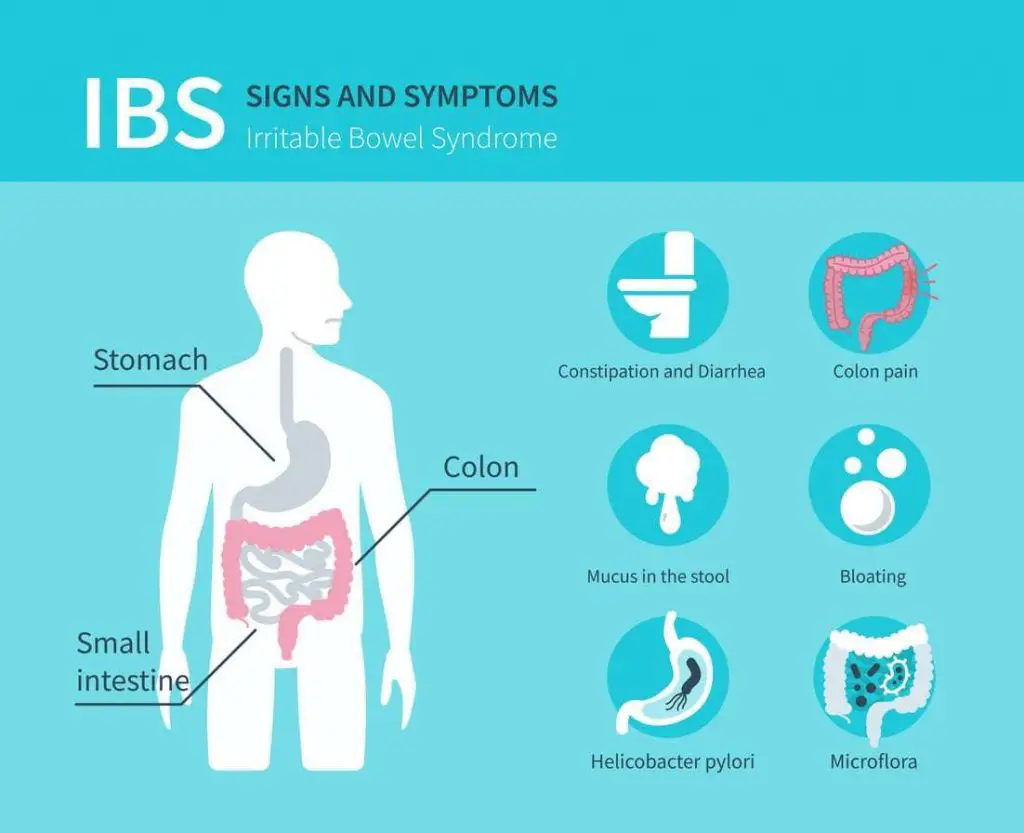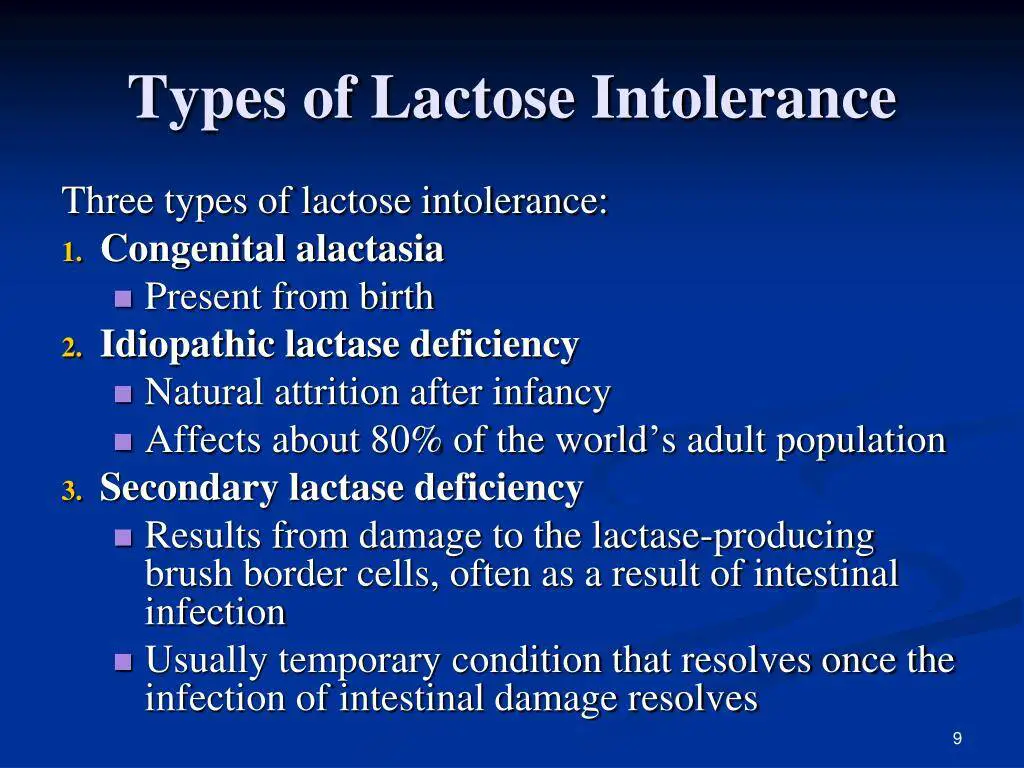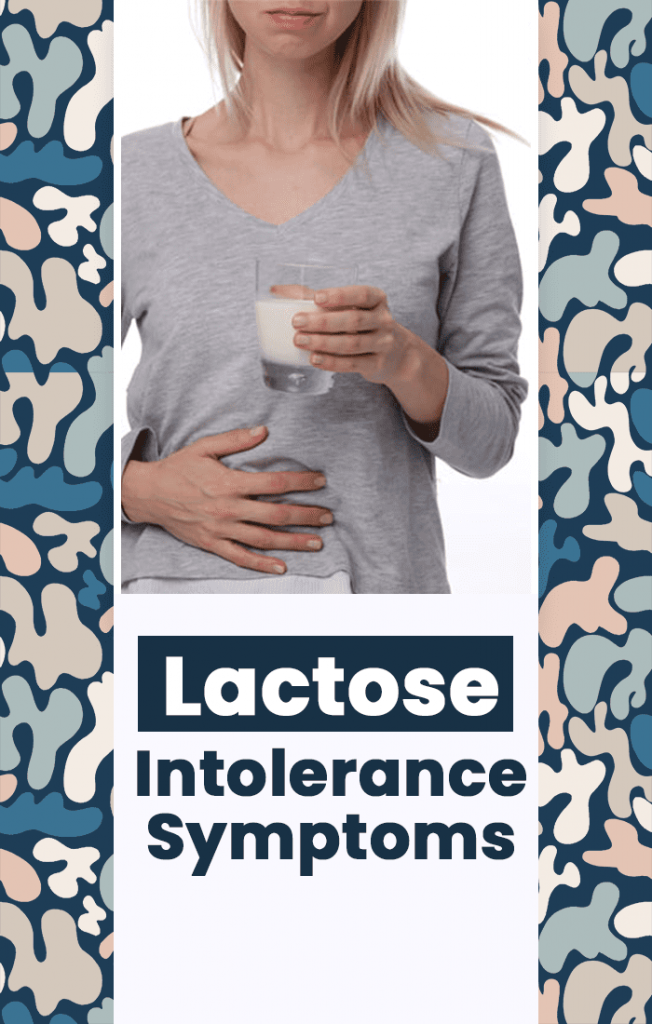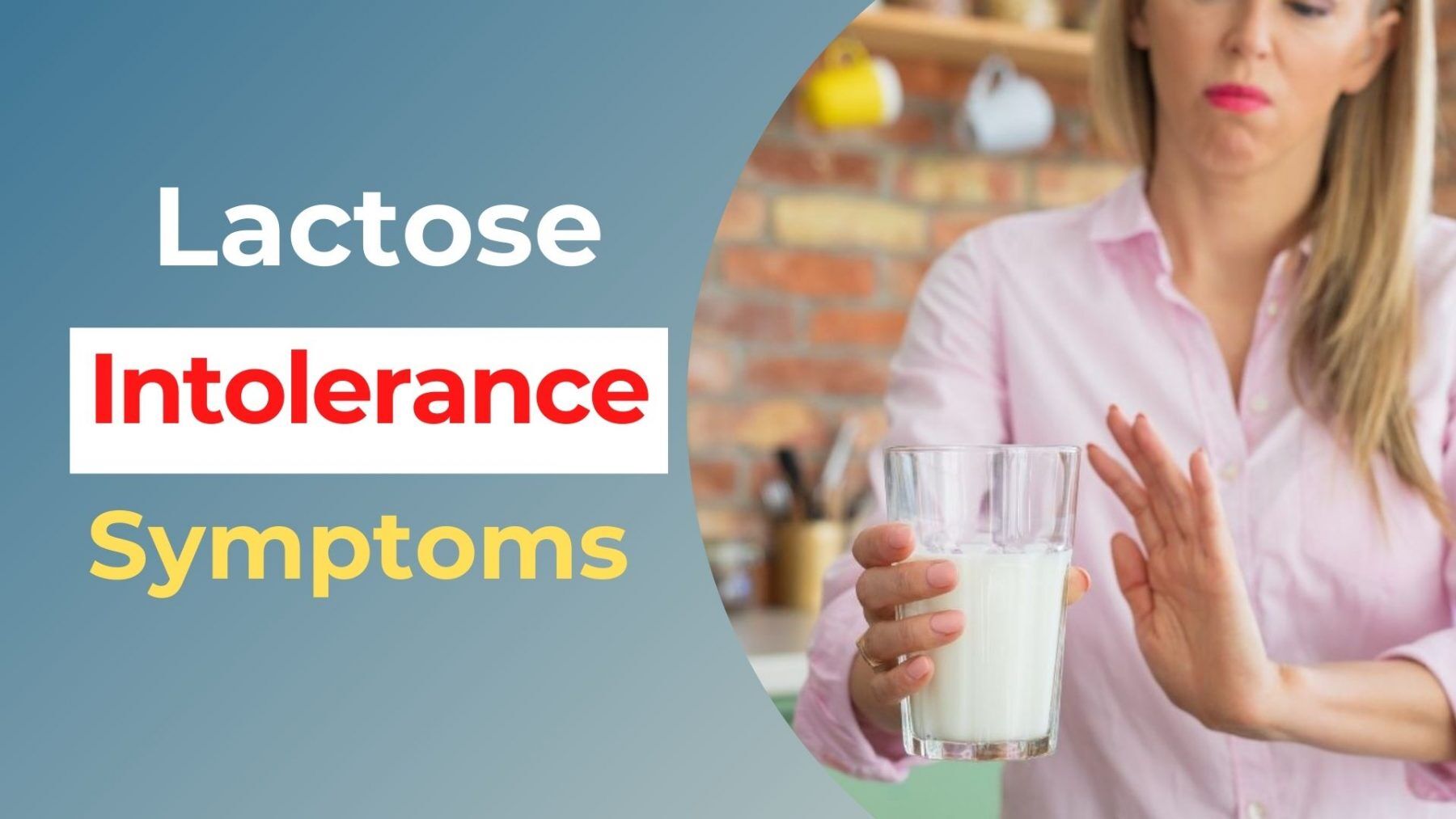While a fairly common condition, the symptoms of lactose intolerance are not considered severe or life threatening.
However, it can be difficult to identify whether you have an intolerance. Because there are many reasons that also explain the symptoms of being lactose intolerant.
For example, the milk you drank has just gone bad. And sometimes even without drinking milk you will get gas, fart, or get cramps.
It’s very hard to truly tell if you are lactose intolerant.
Intolerance testing kits can help you, but let us also describe some symptoms of lactose intolerance so that you can get a better idea.
General Rule of Thumb
If you get these symptoms of lactose intolerance after consuming other dairy products then you may be lactose intolerant.
At the same time, let’s remember many of the symptoms below are common. Don’t assume you are lactose intolerant just because one day you drank milk and felt bloated.
Remember, a lactose intolerance is not fatal like an allergy to peanuts (which is very dangerous).
While we aren’t totally sure on what causes lactose intolerance, we have some good news too. The worst that will happen if you are lactose intolerant is that you’ll have a stomach cramp or your poop will smell.
And while cramps are crappy, you don’t want to restrict milk and dairy products out of your life. They can be a wonderful source of protein and hydration!
Without further ado, let’s check out the 9 most common symptoms when you can’t digest lactose!
1 – Bloating and Stomach Pain

The first sign you’ll always feel is bloating and then stomach pain after consuming dairy products.
Lactose intolerance is the inability to break down lactate—a sugar found in dairy products—because the body lacks the correct enzymes to do so.
Instead, naturally occurring bacteria in your gut works to break down the lactate via fermentation (but not the enzymes like normal).
This fermenting process releases short-chain fatty acids, hydrogen, methane, and carbon dioxide.
This increase of acid and gases causes stomach pain and cramps as the gut wall is stretched in a process called distention. This is what causes the feeling of bloating.
I know this chemical process may sound complicated, but bloating is not!
2 – Constipation

This is a bit of a rarer symptom, but it’s possible that the fermentation of undigested lactose can cause constipation.
This is due in part to the methane gas that the fermentation produces. These are believed to slow down the movement of food traveling through the digestive tract.
We should reiterate that constipation is not one of the most common signs you might have lactose intolerance. In fact, the alternative is arguably worse.
But also, we should note lactose intolerance can result in the opposite symptom as well!
3 – Diarrhea

Rather than constipation, you’re far more likely to experience diarrhea.
The colon reabsorbs most acids, but the leftover acids and lactose from the fermentation process releases more water into the colon than normal. This causes diarrhea as bowel movements become more liquid.
However, this symptom usually requires 1.6 ounces of carbohydrates, which translates to roughly 3 to 4 glasses of milk (or comparable amount of other dairy products).
Do you see how diagnosing a lactose intolerance is difficult on your own?
4 – Flatulence

Unfortunately, symptoms continue around the colon.
As we mentioned, the fermentation process produces a lot of gases as bacterial microfloras work to break down lactate in place of the proper enzymes.
When all this lactose gas builds up, there’s only one way for it to go. Big old juicy farts!
People suffering from lactose intolerance will experience a lot more flatulence than normal.
The amount of gas varies from person to person. But oddly enough, flatulence caused by lactose intolerance has been found to have little to no odor. This is a key sign of intolerance.
But then you would have to try to smell your farts … and so you may get a whiff of something yucky smelling!
5 – Stool Is Greasy and Oil
Another one of the symptoms of lactose intolerance is where after you eat or drink your stool is greasy, oil and floats in water.
This is due to the fat content of undigested lactose from dairy products.
Normally, after we eat dietary fats, pancreatic lipase breaks down triglycerides into free fatty acids and glycerol.
However, if you’ve yet to digest most of your lactose, this doesn’t stand a chance against bacterial fermentation as lipases break down the shorter-chain triglycerides (SCFAs) instead, which are left laying around in your small intestine.
The result is that these lactose oils float on water rather than sinking in it.
Kinda like oil and vinegar, right?
6 – Tired or Sluggish After Dairy Products

If you drink milk or have cheese with your meal you may be lactose intolerant if you then feel sluggish afterwards.
The reason for this is that most of the lactose has not been digested, instead remaining in your colon where it attracts water and ferments.
I know it sounds gross and yes, it is! Stool fermenting in your small intestine. Yuck!
This gross sounding yucky mess then slows down digestion. It often causes you to feel tired or sluggish after consuming dairy products.
7 – Strong Stool Odor
The last sign of lactose intolerance is having a stool with a strong odor that can’t be masked by other foods you consume.
Yet, people who are lactose intolerant can have bad smelling stools due to many a variety of ways.
But before you panic, the following are possible causes for your stool’s smell that aren’t related to lactose intolerance:
- Eating food with strong smells like garlic or curry.
- Regular use of antibiotics can increase the bacteria in your large intestine and lead to stronger smelling gas.
- Certain foods like asparagus and other vegetables contain sulfur that adds to odor and smell when they break down.
- Increase in bacteria present in your gut because of better digestion from regular exercise.
The last sign is by far the worst one on this list as it’s hard not to notice if your stool has a highly unusual odor.
This doesn’t mean you have an acute case of lactose intolerance, however.
Oftentimes the smell will go away on its own (after the bacterial fermentation process has completed). Or, if you stop eating foods that contain lactose and go lactose free.
8 – Itching
Just like with diarrhea, mild cases of lactose intolerance can cause itching in the rectum due to irritation from undigested milk proteins.
It’s possible that this leads to anal fissures or hemorrhoids. Because irritating existing fissures or weak spots in your intestinal lining get worsened.
On top of that, the symptoms caused by being unable to digest lactose are often mistaken for more serious conditions such as:
– colitis
– proctitis
– hemorrhoids
9- Irritable Bowel Syndrome (IBS)

Now, if you have to go to the bathroom at least once every day and experience symptoms such as stomach pain, bloating, constipation or diarrhea after you eat milk products containing lactose …
This could be a sign of Irritable Bowel Syndrome.
Can you become lactose intolerant all of a sudden?
One of my best friends is lactose intolerant and for years he just avoided milk products because he sensed they made him feel bad.
But sometimes he would have milk products and would feel fine. He didn’t think he was lactose intolerant. But then one day his symptoms got worse. He went to the doctor and he became lactose intolerance diagnosed.
Before he had a little discomfort after drinking milk or having cheese. But then one day for no clear reasons these symptoms got worse!
Yet, he had lived with years all being lactose intolerant and he never noticed!
My friend had an underlying intolerance to lactose, which became triggered one day. But I talked to him about that day to see if he could remember anything eventful, but he said no.
It’s like that other people with lactose intolerance share the same story. Let me know in the comments if you can relate!
What are the 4 types of lactose intolerance?

Lactose intolerance is a broad term used to describe different levels of the same thing.
Depending on how serious the problem is, there are three main types:
- Primary
- Secondary
- Congenital
Primary lactose intolerance is far more common than secondary and tends to develop when you get older in life.
The condition can also be identified because symptoms will be even worse after eating larger amounts of milk products (cheeses, yogurt, etc) rather than smaller amounts.
Primary lactose intolerance occurs as your body ages. Or when you have had abdominal surgery that altered the structure of your small intestine.
Secondary lactose intolerance has nothing to do with aging. Often it can appear at any age, in some cases even affecting infants.
Genetic or Congenital lactose intolerance is a rare form of the condition that is present at birth. It can also be hereditary depending on the family line.
The same happens as adults. Symptoms go away after you get older. Although for some people with lactose intolerance it may take longer.
Final Thoughts On Symptoms Of Lactose Intolerance
In this blog post, we’ve covered some of the most common symptoms of an intolerance lactose condition and what they may mean.
If you are experiencing any of these signs or have a question about your digestive health, don’t hesitate to reach out!
You can also try out a lactose testing kit, or even get a hydrogen breath test!
We would be more than happy to answer any questions that you might have about whether you can digest lactose, or foods that contain lactose. We can also help diagnose if there is something going on with your diet or digestion.



